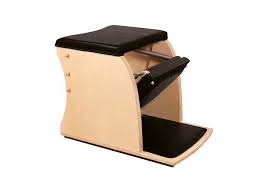What is the difference between Contemporary Pilates and Classical Pilates?
- Sara Vincent

- Oct 25, 2021
- 4 min read
Did you even know there were different styles of Pilates? You could even mix in a third with more rehabilitative pilates that has more of a Physical Therapy focus. When I first got certified I honestly didn't fully understand this myself and luckily got certified in the style that I truly think fits me the best but you may need to see what style fits you and your body best.
The most simple way to explain the differences between the two is that Classical Pilates adheres to the original exercises and order as Joseph Pilates intended them to be used. Contemporary Pilates tends to create different variations, choreography and mix up order or even create new ways to use the apparatus. Joseph Pilates was very innovative and always creating new exercises and apparatus to use himself, so who know's maybe he would have even thought of some of these variations if he were still alive.
Personally, I like having an order and a system to teach with as well as being a client myself. There is so much unpredictability in our day to day I like knowing that my pilates practice can be my check in with my body each session to see how it handles the exercises it's already used to, it helps with my mind body connection while not having to worry about what comes next, my body's natural rhythm starts to lead me through the flow of the exercises in the order and transitions to help reconnect. Once you have a strong base to your pilates practice then you can start working the system to help diagnose your weaknesses, strengthen them and as you advance you can continue to challenge them in new ways.
"Within conformity there is great freedom," a quote from one of my past teachers. I find there is so much true work in the original exercises there is no need to recreate them, even the prep for some exercises can add a deeper connection to the work. You follow the same order on the mat or reformer and as you progress you will start to build in new exercises into your repertory. For example, any classical pilates mat class will start with The Hundred, no matter what country or studio you are in but with contemporary that may not be the case. Some people need more variety in their workout routine so a more contemporary style may be up your alley. Often each class varies between each week so no class will be alike, where as with classical, a "Tower Class" will have the similar flow of mat and springs or push through bar elements...you usually start laying down and end class standing.
There is no right or wrong and both truly compliment each other. Before you choose your Pilates instructor or your studio maybe try to check out what their Pilates Certification was based in, this will help you understand what type of session or classes they offer. Another difference will be the styles of equipment, for instance a Pilates reformer can have 4 springs with the same tension on a classical reformer and on a contemporary reformer there can be up to 5 with multiple different tension options. You may notice the straps are made of leather coming from the base of the reformer frame this is closest to the reformers Joseph Pilates created, some contemporary reformers have more of a cable as a strap and they come from risers so they're coming from a different angle. Depending on what type of equipment you start your training on exercises may seem and feel different due to the variations in equipment, again another reason to know what type of pilates you are trained in when looking at different studios or classes available.
Images on the top are Classical and on the bottom are more Contemporary.
Most of the time the names of the classical exercises aren't too far off from what Joseph Pilates called them, some have morphed and changed over time but even within the Contemporary system the classical names are filtered throughout. Pilates is all based from the exercises that Joseph Pilates created and the principles throughout most certification styles all include some form of these as their basis...Centering/Stabilization, Control, Concentration, Flow-Efficiency of Movement, Precision, and Breath. Often clients find themselves at whichever studio is closest in proximity or where they were referred to by a friend or maybe what's more in their price point. Wherever your pilates journey takes you I hope you feel how the principles of Pilates helped you to connect to your body in a new way.
What style of Pilates have you taken? If you've taken more than one style did you find you gravitated to one more than the other? I'm just curious...I personally am happy with Classical Pilates and don't feel the need to explore, I use my dance training for the more creative side of my brain and enjoy the systematic approach that my current pilates regimen brings to me.













Comments